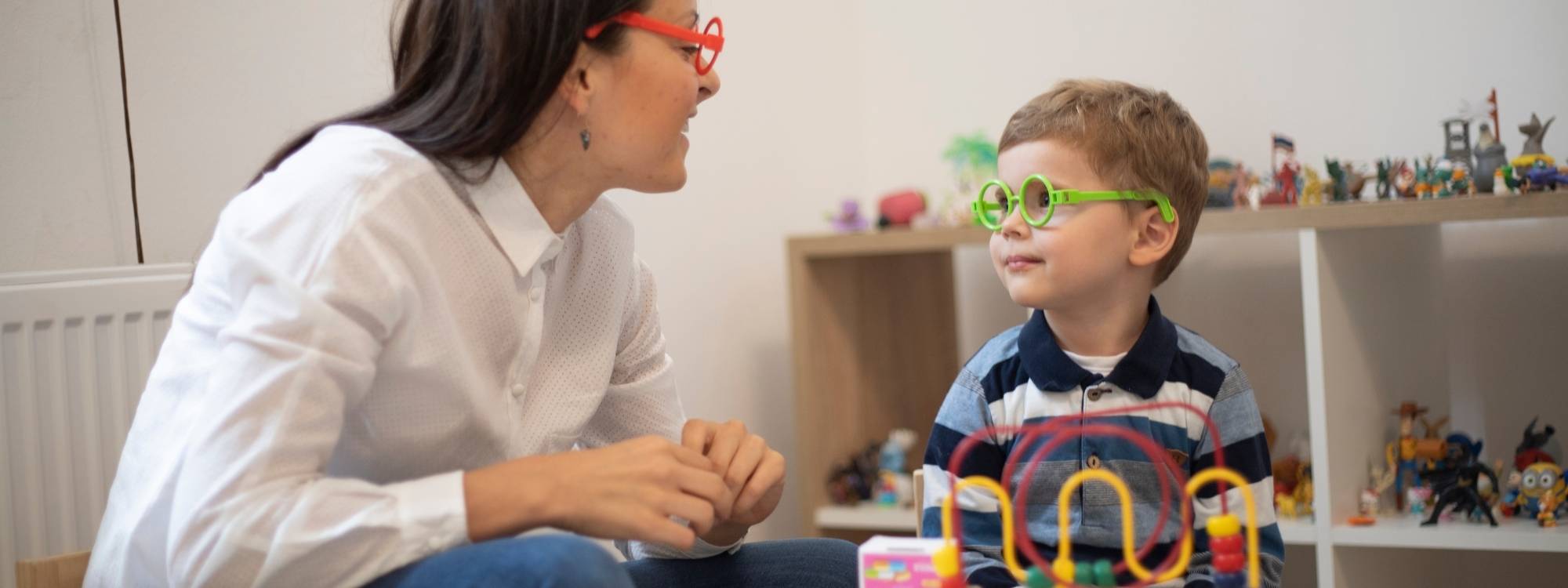Introduction to Autism Spectrum Disorder (ASD)
Autism Spectrum Disorder (ASD) is a complex neurodevelopmental condition that affects social communication, behavior, and the ability to interact with the world. It’s called a “spectrum” because individuals with ASD experience a range of symptoms and challenges, which can vary significantly in severity. These challenges typically involve social communication issues, restrictive or repetitive behaviors, and sensory sensitivities, ultimately affecting the quality of life. The Diagnostic and Statistical Manual of Mental Disorders (DSM-5) classifies autism into three levels of autism based on the amount of support an individual needs. Level 2 Autism is considered moderate, where individuals require substantial support for social interaction, verbal and nonverbal communication, and managing repetitive behaviors.
Early diagnosis and intervention are crucial for individuals with ASD, especially at Level 2. Though there is no cure for autism, early intervention can significantly improve development and help individuals gain the essential life skills needed for daily life. With appropriate support, individuals with Autism can lead fulfilling and meaningful lives.
Understanding Level 2 Autism
What Is Level 2 Autism?
Level 2 Autism falls in the middle of the autism spectrum, meaning individuals with this level of ASD require very substantial support. These individuals experience significant challenges with social communication, behavioral regulation, and adaptive skills. While they may be able to engage in verbal communication, they often have difficulty initiating social interactions and understanding social cues.
It is marked by repetitive behaviors, such as repetitive movements or restricted interests, which can interfere with daily life. Unlike high-functioning autism (Level 1), individuals with Autism may require more hands-on support for daily activities and developmental delays.
Key Characteristics of Level 2 Autism
Level 2 Autism is characterized by:
- Social Communication Challenges: Individuals may struggle with back-and-forth conversations, often missing social cues or nonverbal communication skills. They may also exhibit difficulty interpreting facial expressions or body language.
- Repetitive and Restrictive Behaviors: These individuals often engage in repetitive behaviors, such as hand-flapping, rocking, or strict adherence to routines. These behaviors can be distressing and interfere with daily life, making it difficult to adapt to changes in the environment or routine.
- Sensory Sensitivities: Many individuals with Autism have sensory sensitivities, such as being overly sensitive to bright lights, loud noises, or certain textures. These sensory integration difficulties can make everyday environments overwhelming.
- Social Interaction Struggles: Difficulty in forming and maintaining relationships is common. These individuals may have trouble reading social cues, which can lead to misunderstandings or frustration.
Autism Diagnosis
The Diagnostic Process
An accurate autism diagnosis is the first step toward providing tailored support. Diagnosing Autism Spectrum Disorder typically involves developmental screening and formal diagnostic testing, such as the ADOS-2 assessment. Early childhood is the best time to identify autism symptoms, although a diagnosis is often made by age 2 or 3.
The DSM-5 offers detailed criteria to categorize autism symptoms into three levels: Level 1, Level 2, and Level 3. Level 2 Autism, in particular, is diagnosed when a child exhibits speech or communication challenges, as well a social communication disorder and restrictive or repetitive behaviors, requiring substantial support.
Early Diagnosis and Intervention
Early identification of autism symptoms allows for early intervention services to begin. For children diagnosed with Autism, early intervention is key to maximizing developmental outcomes. These services, including ABA therapy, speech therapy, and occupational therapy, are specifically tailored to address the child’s individual needs. Early intervention helps children develop communication skills, manage repetitive behaviors, and improve social interaction, ensuring they are better prepared for school and social environments.
Treatment Options for Level 2 Autism
Comprehensive Treatment Approaches
While there is no single treatment for Level 2 Autism, a combination of therapies can help individuals manage the severe challenges they face. Some of the most effective treatments include:
- Applied Behavior Analysis (ABA) Therapy: ABA is a structured, evidence-based therapy that uses positive reinforcement to teach new skills and reduce problematic behaviors. For individuals with Autism, ABA can help improve social interaction and manage communication difficulties.
- Speech Therapy: Speech therapy focuses on improving verbal and nonverbal communication skills. It helps individuals with Autism develop the ability to express themselves more clearly, improving their overall communication skills.
- Occupational Therapy: Occupational therapists work with individuals to improve daily living skills such as dressing, eating, and personal hygiene. For those with Level 2 Autism, this therapy can also address sensory sensitivities and provide tools for coping with sensory overload.
- Medication: While there is no medication specifically for autism, some medications can help manage symptoms such as irritability, aggression, or anxiety. Medications may also be prescribed for individuals who exhibit extreme difficulty engaging in therapy or daily activities.
Early Intervention for Autism
The Importance of Early Intervention
Early intervention services are crucial for children with Level 2 Autism. These services, which include speech therapy, ABA therapy, and sensory integration therapy, are designed to help children develop essential life skills, including how to communicate effectively, interact socially, and manage challenging behaviors.
Intervention should be individualized, as children with Autism have unique challenges and strengths. Early intervention not only improves long-term outcomes but can also make a child’s daily life more manageable by teaching them how to cope with sensory sensitivities, communication difficulties, and social challenges.
Impact of Level 2 Autism on Daily Life
Social & Behavioral Impacts
The substantial challenges associated with Level 2 Autism can affect almost every area of a person’s life, including social relationships, academic performance, and even employment in adulthood. Repetitive behaviors and social communication difficulties may limit opportunities for making friends, succeeding in school, or holding a job.
However, with appropriate support and therapeutic interventions, individuals with Autism can develop essential social skills needed to manage these challenges. Social skills training and ABA therapy are essential components of improving daily functioning and achieving independence.
Support Systems
A strong support system is essential for individuals with Autism. These can include family members, healthcare providers, educational professionals, and community resources. Healthcare providers are critical in developing an individualized treatment plan and ongoing support to address the evolving needs of individuals with autism.
Parental Role and Support for Level 2 Autism
The Crucial Role of Parents
Parents of children with Level 2 Autism are often the first to notice developmental delays and are vital in initiating the process of seeking an autism diagnosis. Their involvement in early intervention and support services is key to the child’s success.
Parents can provide a nurturing environment at home by reinforcing positive behaviors, creating consistent routines, and offering opportunities for meaningful connections and social interaction. Ongoing support from healthcare providers and therapists is also essential in helping the child navigate the challenges of autism and reach their full potential.
Conclusion
Level 2 Autism is a moderate form of Autism Spectrum Disorder, requiring substantial support in areas like communication, social interaction, and behavior. Individuals with Autism face significant challenges, but with early diagnosis, appropriate support, and early intervention services, they can achieve meaningful progress. Families, healthcare providers, and therapists play a crucial role in helping individuals with Autism lead fulfilling, independent lives.
Worried about your child’s autism diagnosis? At Champions ABA, we specialize in supporting children with Level 2 Autism through personalized interventions tailored to their needs. Our expert team uses ABA therapy and other proven methods to help children enhance their communication, social skills, and daily living. Call us now or visit our website to learn more about how we can support your child’s development and growth today.
FAQs
How serious is Level 2 Autism?
Level 2 Autism is considered a moderate level of severity in the autism spectrum. Individuals with Level 2 Autism face significant challenges in communication, social interaction, and behavior, requiring substantial support in their daily lives.
What are Level 2 behaviors in autism?
Level 2 behaviors in autism include difficulty with verbal and nonverbal communication, social interaction challenges, repetitive behaviors, and sensory sensitivities. These behaviors can significantly interfere with daily life, but can be managed with appropriate therapies like ABA therapy and speech therapy.
Can a child with Level 2 Autism live independently?
While many children with Level 2 Autism can achieve greater independence with the right support and intervention, most will require ongoing support as they grow, especially if they have an intellectual disability. Some may be able to live semi-independently, particularly in structured environments with proper accommodations.
Can a child with autism be normal?
While individuals with autism may have challenges that differ from those of neurotypical individuals, they can lead fulfilling lives. With early intervention, therapy, and appropriate support, many children with autism can improve their communication skills, social interaction, and behavior, allowing them to participate fully in society.



